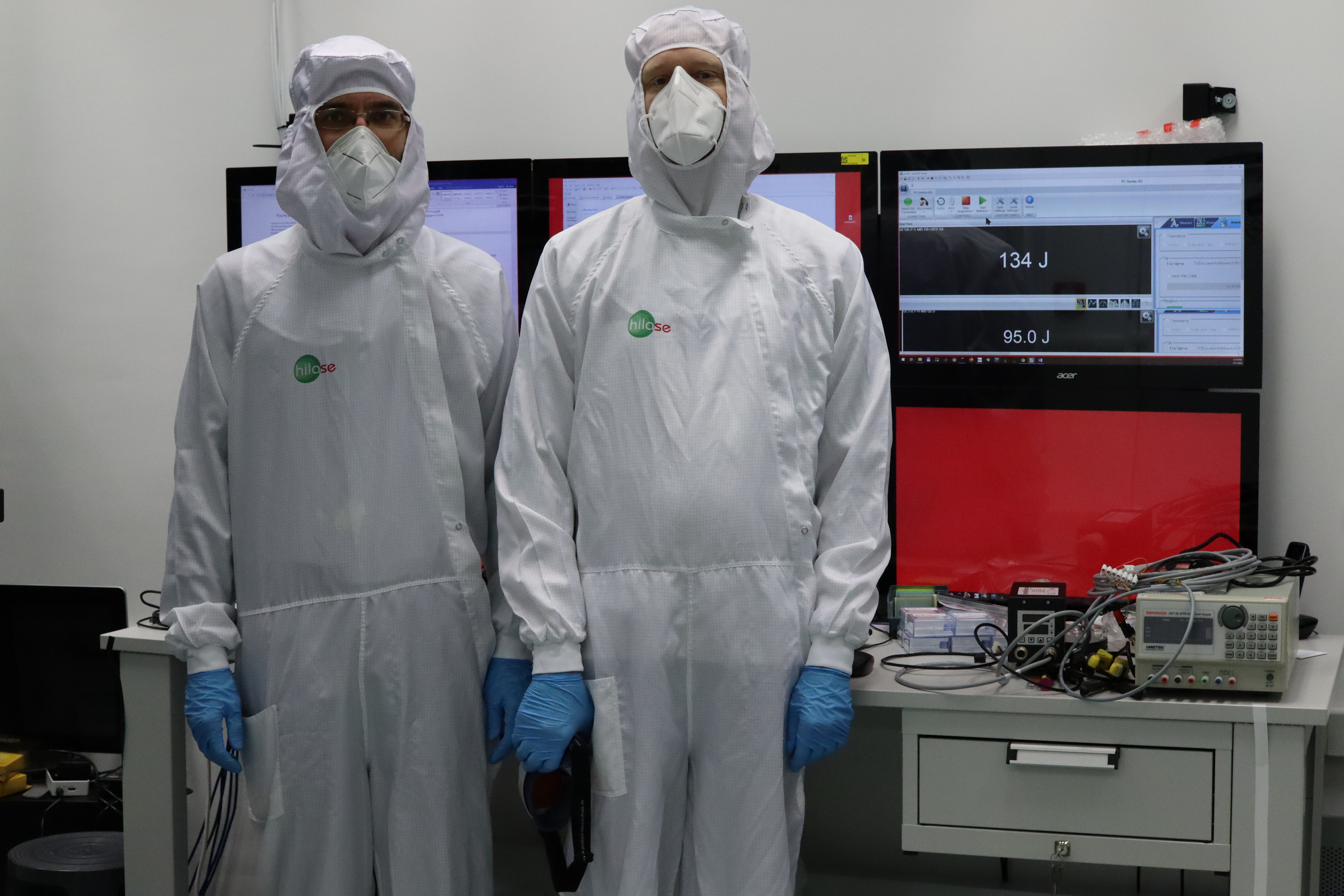DiPOLE100, delivered to the HILASE Centre in Prague in 2016 by the CLF's CALTA team, has surpassed its own record, delivering the highest second harmonic pulse energy ever recorded at 10 Hz repetition rate.
Back in November 2021, DiPOLE (named BIVOJ by HiLASE), demonstrated world leading performance when it generated 68 Joule, 515 nm, second harmonic pulses at 10 Hz. And at the end of January, the second harmonic pulse energy was increased to 95 J by running BIVOJ at higher power; an increase of 40%!
“Our latest results were taken using BIVOJ at full power," explains Dr. Martin Divoký, leader of the High Energy Slab Lasers team. "And on 21st January, we generated second harmonic pulses of 95 J at a repetition rate of 10 Hz, exceeding our November results by 40%. Another significant milestone for BIVOJ!"
This milestone is highly significant:
- For materials processing applications, the shorter wavelength is more strongly absorbed by many non-ferrous metals, such as copper or aluminium, than DiPOLE's fundamental wavelength at 1030nm.
- Laser shock peening is used to increase the strength and corrosion resistance of high value aerospace components. The technique usually requires water to be flowed over the surface being treated to improve the coupling of the shocks, produced by the laser, into the bulk material. At 515 nm, water transmits almost all of the incident laser radiation, making it possible to totally immerse the target material. This will greatly simplify the process, thereby reducing costs and increasing the applicability of the technique.
- The generation of ultra-short laser pulses, (10s of fs) using 515 nm laser radiation to pump Titanium Sapphire crystals is well established. By combining high peak power at 515 nm with high repetition rate, the DiPOLE architecture will enhance existing areas of research and open up new applications in fundamental research, industrial processing, medical treatments and defence applications. It is this transformation that will be exploited by EPAC, CLF's new user facility currently under construction at RAL.

(Photo from the experiment at Hilase. Image credit: Hilase)
Professor John Collier, Director of STFC's Central Laser Facility said:
“I am delighted by these latest results from the HiLASE facility. This is an extremely important milestone in the development of our high power / high repetition rate laser technology. It is significant both for HiLASE and CLF. High power second harmonic output is essential as a pump source for the Extreme Photonics Applications Centre (EPAC), a facility currently under construction at STFC's Harwell site.
“My congratulations to the Widespread laser teams at HiLASE and CLF."
Following commissioning at HILASE, the DiPOLE 100 system has been progressively enhanced in a highly productive collaboration between HiLASE and CLF scientists and engineers, with funding from the H2020 Widespread Teaming programme and the Czech Ministry of Science.
For further information, please contact Dr. Jonathan Phillips (jonathan.phillips@stfc.ac.uk)
Click here to access the Hilase Press release.
